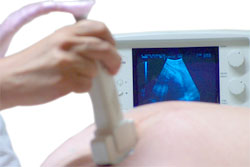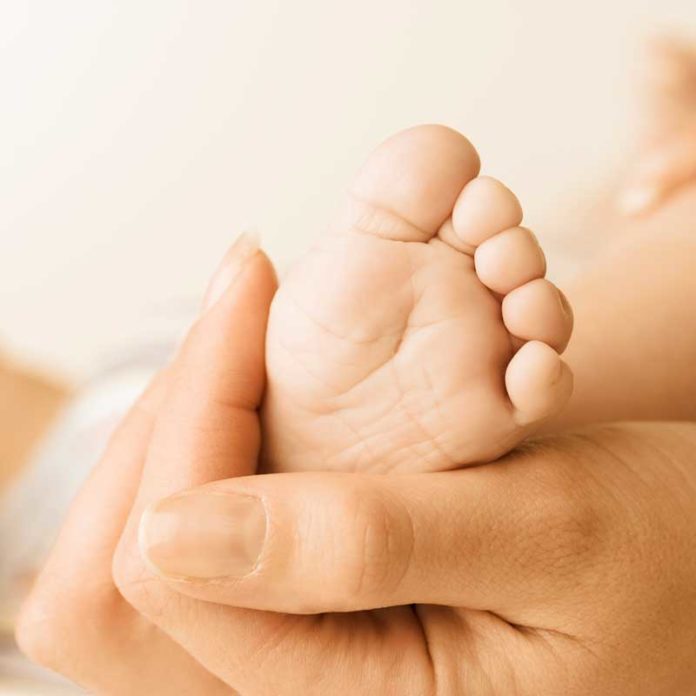Like many people, when Kaitlin first encountered the term ‘clubfoot‘, she associated it with ugliness or deformity. But when her beautiful baby was diagnosed and born with the condition, she understood that it is not only quite common but also nothing to be afraid of. Those little feet are still just as adorable as ever – and with a little TLC and medical attention, clubfoot is just like experiencing one of the many other challenges of parenting.
Bittersweet
First-time mums are nervous enough. And for Kaitlin and her partner, the 20-week ultrasound was a bittersweet occasion.
“It was the time we were supposed to be finding out the gender. Instead, it became quite distressing,” Kaitlin says.
When the couple received the ultrasound, the sonographer advised them that their little bundle of joy was a baby girl – and that she also has ‘talipes’.
Congenital talipes equinovarus is a problem of the lower leg in which the feet are pointing the wrong way. The feet are turned down and in towards each other, making it impossible to walk. Sometimes this affects both feet, and sometimes just one.
At the time, Kaitlin knew nothing of this condition.
“We didn’t even know what it was, and the sonographer really couldn’t tell us anything, so we had to go home and research it on the internet.
“We realised it was actually clubfoot – something I had always associated with deformity. Add to that the fact that the images on the internet were extreme and very disturbing. We became quite distressed from that point.
“Mainly from the lack of real information.”
So Kaitlin took her tummy to a specialist to understand what was happening.
Womb with a view
 “When I saw the doctor, I received some great advice. I had another ultrasound with a doctor present to confirm it and inform me of everything I needed to know.”
“When I saw the doctor, I received some great advice. I had another ultrasound with a doctor present to confirm it and inform me of everything I needed to know.”
Kaitlin says one of the most relieving moments was the doctor confirming the baby was actually fine and there were no other major complications. He explained that the extent of her baby’s condition would not be known until the birth. He also told her that there are many treatments available for the condition, including massage therapy, boots, plasters and surgery.
“I felt relieved because I was assured it doesn’t affect the labour or pregnancy at all,” she says.
“It also helped to talk. I talked to my partner, midwives and obstetrician. I had these fears that when my baby was born I would be repulsed or afraid, so talking to people who understood was valuable.
“I met people who had experience with clubfoot or who had relatives who had experienced it.”
Kaitlin attended a group session, where advice was circulated about the best ways to deal with stress and anxiety during pregnancy.
Beautiful baby, top to toe
“When my baby girl was finally born, she was just beautiful.”
Kaitlin says that when she saw her little girl for the first time, she felt no fear or anxiety – just love for her new baby.
“Her feet looked like normal feet, they were just in the wrong position.”
So within a few days of the birth, a physio came to visit the beaming new parents and recommended a special type of massage to be performed several times a day. After a month, Kaitlin’s baby needed more attention, so the couple were referred to a specialist.
“Treatment included special casts and then, on the left foot, she needed surgery to lengthen the tendon that was holding her foot in the wrong position.”
To ensure Kaitlin’s little girl develops her feet in the correct way, she was given what is known as “boots and bars” which hold the feet in position as they grow. The baby must wear these all the time for three months, and then at night until she is four. This eliminates the chance of relapse.
Kaitlin says there is no pain involved, only some discomfort.
“Babies lift their legs to relieve their gas, so it makes that harder for her. Otherwise, she is not in pain at all.”
Mile in my shoes
Kaitlin is weary and a little bit tired from the last year, but she says that she considers her and her baby to be very lucky because “it could have been a lot worse”. Kaitlin is also thankful there is treatment available which will ultimately correct her baby’s feet. Getting through those tough stages is tricky. However, when you talk to someone who has been a mile in your shoes – or feet, for that matter – it does feel much better.



 (5 votes, average: 4.00 out of 5)
(5 votes, average: 4.00 out of 5) 






